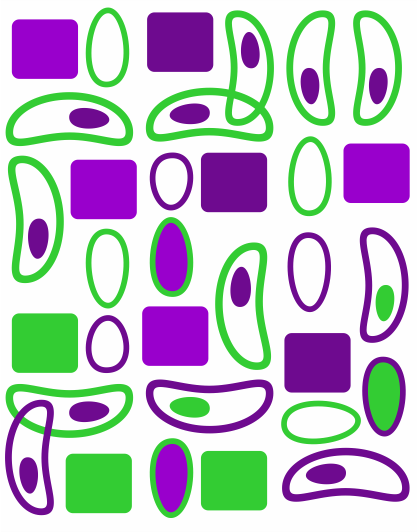Toxoplasma gondii in free-range chickens from Bahia State: serology, meta-analysis, associated factors and spatial analysis
DOI:
https://doi.org/10.17696/2318-3691.31.01.2025.263Keywords:
Toxoplasma, Chickens, Epidemiology, Risk FactorsAbstract
Introduction: Free-range chickens have been studied extensively as environmental contamination markers by Toxoplasma gondii, a cat Coccidia, which causes important zoonosis and an agent of abortion in production animals. Objective: The objective of this study was to evaluate the frequency of infection of chickens reared in rural properties of Feira de Santana, Bahia, Brazil, and the factors associated with rates of positivity. Methods: A total of 290 blood samples were obtained from birds of 15 properties and examined by modified agglutination test in dilutions equal to or greater than 1:25. Data on the conditions of birds rearing and contact with other animals were collected. Sample collection was conducted between March and September 2016. Results: The Frequency of reagent sera (49.7%) in Gallus gallus can be considered similar to other Brazilian works, however, the titers found were less than or equal to 100 in 90% of birds with acute infection. Conclusion: Among the factors surveyed, the area of origin of the samples, the presence of cats, cats fed with raw meat, and the absence of dogs with less than six months were significantly associated with rates of infection of birds by logistic regression. Spatial cluster analysis showed an area of concentration of infected birds.
References
1. Milne G, Webster JP, Walker M. Toxoplasma gondii: An Underestimated Threat? Trends Parasitol. 2020;36(12):959-69. doi:10.1016/j.pt.2020.08.005.
2. Dubey JP, Murata FHA, Cerqueira-Cézar CK, Kwok OCH, Villena I. Congenital toxoplasmosis in humans: an update of worldwide rate of congenital infections. Parasitology. 2021;148(12):1406-16. doi:10.1017/S0031182021001013.
3. Almeria S, Dubey JP. Foodborne transmission of Toxoplasma gondii infection in the last decade. An overview. Res Vet Sci. 2021;135:371-85. doi:10.1016/j.rvsc.2020.10.019.
4. Dubey JP, Pena HFJ, Cerqueira-Cézar CK, Murata FHA, Kwok OCH, Yang YR, et al. Epidemiologic significance of Toxoplasma gondii infections in chickens (Gallus domesticus): the past decade. Parasitology. 2020;147(12):1263-89. doi:10.1017/S0031182020001134.
5. Dubey JP, Lehmann T, Lautner F, Kwok OCH, Gamble HR. Toxoplasmosis in sentinel chickens (Gallus domesticus) in New England farms: Seroconversion, distribution of tissue cysts in brain, heart, and skeletal muscle by bioassay in mice and cats. Vet Parasitol. 2015;214(1-2):55-8. doi:10.1016/j.vetpar.2015.09.004.
6. Dubey JP. Toxoplasmosis of Animals and Humans. 3rd ed. Boca Raton: CRC Press; 2022. 542 p.
7. Kakakhel MA, Wu F, Anwar Z, Saif I, Akbar NU, Gul N, et al. The presence of Toxoplasma gondii in soil, their transmission, and their influence on the small ruminants and human population: A review. Microb Pathog. 2021;158:104850. doi:10.1016/j.micpath.2021.104850.
8. da Silva DS, Bahia-Oliveira LMG, Shen SK, Kwok OCH, Lehman T, Dubey JP. Prevalence of Toxoplasma gondii in chickens from an area in southern Brazil highly endemic to humans. J Parasitol. 2003;89(2):394-6. doi:10.1645/0022-3395(2003)089[0394:POTGIC]2.0.CO;2.
9. Braz BMA, Feitosa BCO, Romão EA, Silva EM, Pinheiro Júnior JW, Mota RA, et al. Cross-sectional survey for toxoplasmosis in free-range chickens (Gallus gallus domesticus) from the Atlantic Forest area in Alagoas state, Northeastern Brazil. Rev Bras Parasitol Vet. 2020;29(4):e014120. doi:10.1590/S1984-29612020087.
10. Brasil. IBGE | Cidades@ | Bahia | Feira de Santana | Panorama. 2023 [cited 2024 sept 7]. Avaliable from: https://cidades.ibge.gov.br/brasil/ba/feira-de-santana/panorama.
11. Minutti AF, Vieira FEG, Sasse JP, Martins TA, de Seixas M, Cardim ST, et al. Comparison of serological and molecular techniques to detect Toxoplasma gondii in free-range chickens (Gallus gallus domesticus). Vet Parasitol. 2021;296:109515. doi:10.1016/j.vetpar.2021.109515.
12. Centers for Disease Control and Prevention (US). Epi Info. Atlanta: CDC; 2022. [cited 2024 oct 13]. Available from: https://www.cdc.gov/epiinfo/index.html.
13. Kulldorff M. SaTScan - Software for the spatial, temporal, and space-time scan statistics. Boston: Harvard University; 2024.
14. Viechtbauer W. metafor: Meta-Analysis Package for R. Maastricht: Maastricht University; 2024.
15. Firmo VSF, da Silva AV. Meta-analysis Report: Prevalence of Toxoplasmosis in Chickens. 2024. doi:10.13140/RG.2.2.29436.96647.
16. Dubey JP, Ruff MD, Camargo ME, Shen SK, Wilkins GL, Kwok OC, et al. Serologic and parasitologic responses of domestic chickens after oral inoculation with Toxoplasma gondii oocysts. Am J Vet Res. 1993;54(10):1668-72. doi:10.2460/ajvr.1993.54.10.1668.
17. Galli S, Belinato FC, Lucas TM, Silva RC, Langoni H, Silva AV. Infecção experimental de frangos domésticos (Gallus gallus) com cepas geneticamente distintas de Toxoplasma gondii. Veterinária e Zootec. 2008;15(3):542-50.
18. de Wit LA, Kilpatrick AM, VanWormer E, Croll DA, Tershy BR, Kim M, et al. Seasonal and spatial variation in Toxoplasma gondii contamination in soil in urban public spaces in California, United States. Zoonoses Public Health. 2020;67(1):70-8. doi:10.1111/zph.12656.
19. Dubey JP, Lago EG, Gennari SM, Su C, Jones JL. Toxoplasmosis in humans and animals in Brazil: high prevalence, high burden of disease, and epidemiology. Parasitology. 2012;139(11):1375-424. doi:10.1017/S0031182012000765.
20. Dubey JP, Murata FHA, Cerqueira-Cézar CK, Kwok OCH, Yang Y, Su C. Toxoplasma gondii infections in dogs: 2009-2020. Vet Parasitol. 2020;287:109223. doi:10.1016/j.vetpar.2020.109223.
Downloads
Published
Issue
Section
Categories
License
Copyright (c) 2025 Arquivos de Ciências da Saúde

This work is licensed under a Creative Commons Attribution-NonCommercial-ShareAlike 4.0 International License.










